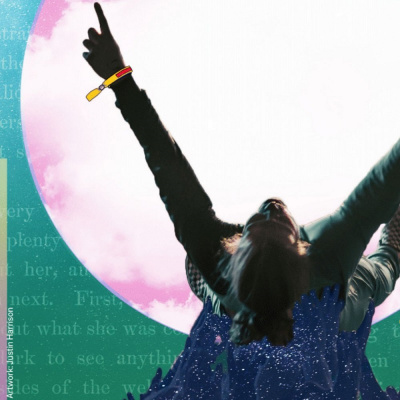APRIL'S FOOL
Keirunga Theatre, Havelock North
09/11/2021 - 13/11/2021
Production Details
Hawke’s Bay Youth Theatre presents a powerful work of verbatim theatre, written by Australian playwright David Burton. Described as charming, intelligent, ambitious and honourable, Toowoomba teenager Kristjan Terauds, died on April Fools Day 2009 after complications from illegal drug use.
Kristjan’s story is hardly a standalone tragedy and is a disturbingly common one in our community. Using the words of Kristjan’s friends and family interviewed over many months, and inspired by the journal of his father, this is a powerful story of love, loss and sadness, with touching humour.
It is intimate, moving, thought provoking and sometimes confronting, but ultimately an optimistic reflection on the choices we make and how they affect those we love. April’s Fool is at various times clinical, vulnerable, comical and deeply spiritual. It brings the real voices of real people into the performance space, bearing a potent message for the audience and a wakeup call for the wider community.
Carefully supported and guided by directors Peter Cottrell and Champa J. Maciel, the actors of Hawke’s Bay Youth Theatre are proud to share this deeply human experience and invite you to actively participate in this discussion with the rangatahi of our community.
Keirunga Theatre, Havelock North
Tue 9th – Sat 13th November 2021
6pm
Matinee Sat 13th, 2pm
Adult: $29.00
Concession: $24.00
BUY TICKETS
Youth , Theatre ,
Painful, poignant and challenging
Review by Ken Keys 10th Nov 2021
April’s Fool is a verbatim-style production, written by Australian playwright, David Burton and set in Toowoomba, Queensland. It tells the sad story of a 19 year-old who died of complications from illegal drug use.
As the label indicates, the script is derived from the actual words of family and friends of the young man, Kristjan; in particular, in this case, the journal his father kept during and post-the hospitalisation period.
It’s a tricky business, I feel, to transfer actual comments and verbal reactions from everyday, real life, to a theatrical setting. It certainly requires a high degree of sensitivity, i.e. “It’s not ‘just’ a play we’re doing here!” That directors Peter Cottrell and Champa Maciel pull it off, with an ensemble cast of young actors, is a tribute to the whole company.
The small theatre at Keirunga, with the audience on 3 sides of the acting area, is totally effective in creating the necessary intimacy, as the 12 close-up characters deliver their recollections of Kristjan, sincerely, believably, with no sentimentalising.
Yet the simple choreography – characters moving from one position to another as they, one-by-one, engage the audience, taking different stances, using chairs – plus a much-needed degree of pace, keep the small audience completely absorbed.
Interspersed with the emotional story-telling are a series of semi-abstract dance sequences, involving the full 12-person-cast, which added a whole other layer to the theatrical experience. Certainly they reinforce the slowly-building tide of grief; the communal element of the whole tragedy, and are a thought-provoking physical/visual counter-balance to the predominant scripted drama.
Less abstract, yet also making a visual impact, are the clever, ‘real’ physical scenes, especially in the hospital; e.g. the ‘dance’ with the sheets; the exaggerated mimed-emergency-operation sequence with a flurry of tubes, surgical instruments and masks.
Truly a holistic production and a holistic experience for the audience.
Superbly nuanced musical and sound/musical effects enhance the drama, as do the chalk drawings on the walls (trees, tree roots? bronchiole tubes?) and the steady drifting of the melancholic autumnal (sycamore?) leaves over the acting area.
Most heart-rending, in the finale, is the almost imperceptible heart-beat until the moment of death and, as a sad, sad ‘epilogue’, the photograph of Kristjan projected on the back wall, with the chirping of birds in the background.
It would be inappropriate for me to single out individual performers, as it is a seamless team performance of 12 totally committed young actors. Their characters include: the father, whose journal-readings are the back-bone; the grief- and guilt-stricken mother; the lovely grand-parents; the brother and sister, the latter so desperate to hold the family together; the best friend; the wonderfully believable medical staff and paramedics; and friends.
The whole cast, (all high school students), crew and directors deserve enormous credit for creating, in very difficult circumstances, a painful, poignant and challenging piece of theatre, a ‘play’ for our times.
Copyright © in the review belongs to the reviewer





Comments